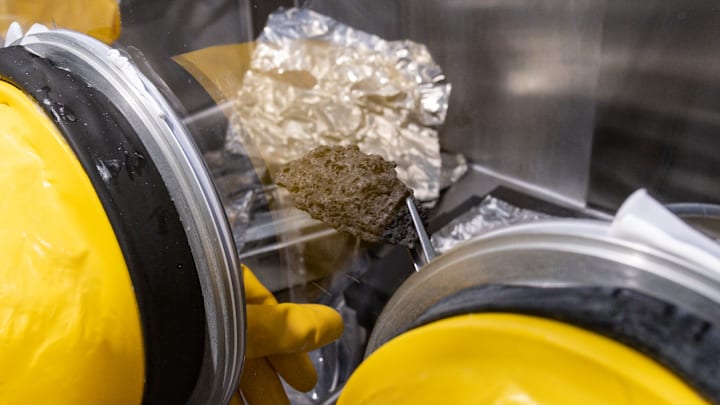The next time you’re anxiously awaiting the results of lab tests from your doctor, be thankful they weren’t routed to NASA. The space agency is just now getting around to testing samples of the moon’s surface that were collected 50 years ago.
The samples were retrieved by the crew of Apollo 17, the final human-occupied moon mission. According to Space.com, the sample was stored frozen at the Johnson Space Center in Houston before being routed to the Goddard Space Flight Center in Greenbelt, Maryland. The frozen debris will be examined under the auspices of the agency’s new Apollo Next Generation Sample Analysis Program, or ANGSA.
Part of the reason the surface collection is just now getting attention is because NASA plans on future lunar missions with accompanying sample retrieval under its Artemis program. As such, it wanted to better understand the best conditions for transporting and inspecting their space loot. The 1972 samples had to be moved while kept in cold storage conditions: -4° F. Handling them requires thick gloves inside a walk-in freezer. Getting them from Houston to Maryland while maintaining preservation protocol will help the agency in transporting future samples from the moon’s icy south pole.
“We started this in early 2018 and there’s been a lot of technical challenges that we’ve had to overcome to get to this point,” Julie Mitchell of the Artemis program said. “This was seen as a practice run for preparing a facility for future cold sample processing.
“By doing this work we're not just facilitating Artemis exploration, but we're facilitating future sample return and human exploration into the rest of the solar system," she said.
What could scientists find? Other lunar samples have contained amino acids and volatile organic compounds, which can provide clues to the organic history of the moon. Other samples were also stored unfrozen, allowing scientists to look for differences between the two storage methods.
Either way, it may be a good idea to wear a mask. When Apollo 17 launched in December 1972, astronaut Harrison Schmitt found himself having a sneezing fit after being exposed to moon dust.
[h/t Space.com]
